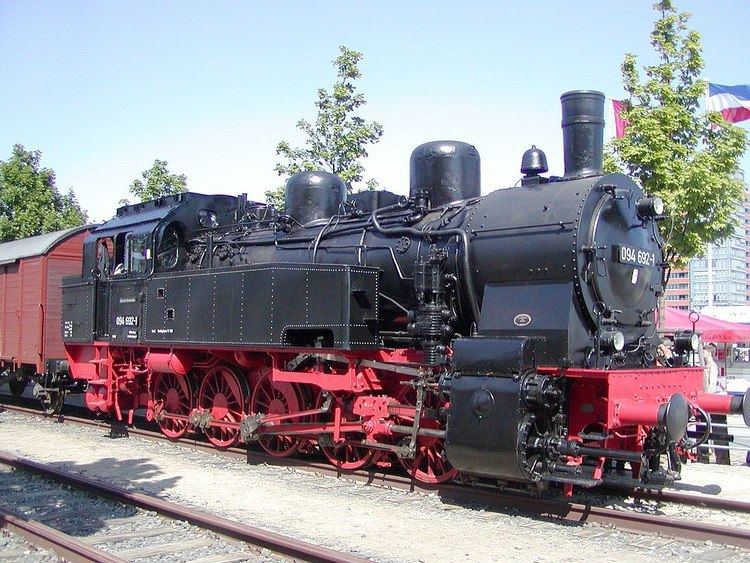Number(s) DRG 94 502–1740 Year(s) of manufacture 1913–1924 Wheel arrangement 0-10-0T | Quantity 1,242 Retired 1974 | |
 | ||
Manufacturer BMAG
Grafenstaden
Hanomag
Linke
Henschel & Sohn | ||
The Prussian T 16.1 locomotives were built for the Prussian state railways as goods train tank locomotives about the time of the First World War. Six examples were also procured by the Imperial Railways in Alsace-Lorraine.
Contents
History
Including follow-on orders by the Deutsche Reichsbahn, a total of 1,242 locomotives were delivered between 1913 and 1924. They were later redesignated as DRG Class 94.5–17 by the DRG in their renumbering plan and were given the numbers 94 502–1380 and 94 1501–1740. Three of the T 16.1 engines belonging to the Imperial Railways in Alsace-Lorraine remained in Germany and were given numbers 94 1378–1380. In 1935, locomotive numbers 94 1381–1384 from the Saar Railway went into the Deutsche Reichsbahn. As part of the reparations required of Germany after the First World War, quite a few examples were given to the Polish State Railway, where they were designated the TKw 2. Some of these locomotives were given the Reichsbahn numbers 94 1385–1416 in the Second World War. After 1945 several former French and Belgian locomotives were left with the Deutsche Reichsbahn in East Germany as numbers 94 1801–1810. In addition, in 1950, another T 16.1 from the Halberstadt-Blankenburg Railway was acquired and numbered as 94 6776. On the introduction of the new DB renumbering scheme in 1968 the Deutsche Bundesbahn locomotives were redesignated as Class 094; the DR renumbering scheme of 1970 saw the DR in East Germany reclassifying its engines as Class 94.1.
In addition to heavy shunting and line duties the locomotives were also employed on steep lines such as the Friedbergbahn (Suhl–Schleusingen), Scheldetalbahn (Dillenburg-Gönnern), Rennsteigbahn (Ilmenau–Schleusingen), the Erkrath–Hochdahl ramp and the Murgtalbahn (Rastatt–Freudenstadt). For such duties the steam engines were equipped with Riggenbach counter-pressure brakes. The great success of this class on inclines made it possible to do away with fiddly and time-consuming rack railway operations on many ramps.
In the Bundesbahn the last examples of this class were retired in 1974. In the Reichsbahn they were withdrawn even later. They were replaced in ramp duties by rebuilt diesel locomotives of Class 118.
A total of 43 representatives of Class 94.5–17 remained after the Second World War in Austria. The majority were handed over to the MÀV in Hungary or SŽD. The remaining 14 units were retained as ÖBB Class 694. The locomotives of this class were mainly used in heavy pusher service and retired by 1966 or sold to steel works as industrial locomotives.
Preserved locomotives
Several locomotives of this class have been preserved, some of which are still working, including numbers 94 1292 and 94 1538 shown in the photographs. In Austria the oldest preserved member of the class, 94 503, later renumbered to 694.503 is preserved at the ÖGEG's locomotive park at Ampflwang, but still awaiting restoration.
